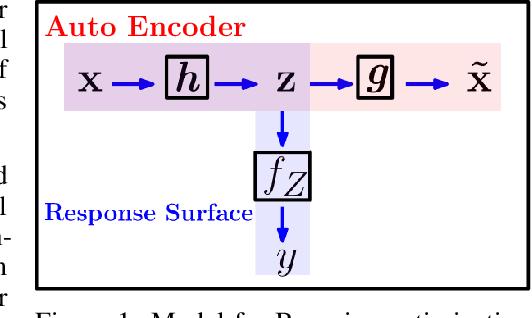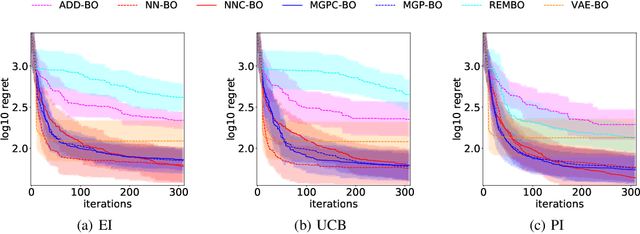Marc P. Deisenroth
RecMoDiffuse: Recurrent Flow Diffusion for Human Motion Generation
Jun 11, 2024



Abstract:Human motion generation has paramount importance in computer animation. It is a challenging generative temporal modelling task due to the vast possibilities of human motion, high human sensitivity to motion coherence and the difficulty of accurately generating fine-grained motions. Recently, diffusion methods have been proposed for human motion generation due to their high sample quality and expressiveness. However, generated sequences still suffer from motion incoherence, and are limited to short duration, and simpler motion and take considerable time during inference. To address these limitations, we propose \textit{RecMoDiffuse: Recurrent Flow Diffusion}, a new recurrent diffusion formulation for temporal modelling. Unlike previous work, which applies diffusion to the whole sequence without any temporal dependency, an approach that inherently makes temporal consistency hard to achieve. Our method explicitly enforces temporal constraints with the means of normalizing flow models in the diffusion process and thereby extends diffusion to the temporal dimension. We demonstrate the effectiveness of RecMoDiffuse in the temporal modelling of human motion. Our experiments show that RecMoDiffuse achieves comparable results with state-of-the-art methods while generating coherent motion sequences and reducing the computational overhead in the inference stage.
GPflux: A Library for Deep Gaussian Processes
Apr 12, 2021
Abstract:We introduce GPflux, a Python library for Bayesian deep learning with a strong emphasis on deep Gaussian processes (DGPs). Implementing DGPs is a challenging endeavour due to the various mathematical subtleties that arise when dealing with multivariate Gaussian distributions and the complex bookkeeping of indices. To date, there are no actively maintained, open-sourced and extendable libraries available that support research activities in this area. GPflux aims to fill this gap by providing a library with state-of-the-art DGP algorithms, as well as building blocks for implementing novel Bayesian and GP-based hierarchical models and inference schemes. GPflux is compatible with and built on top of the Keras deep learning eco-system. This enables practitioners to leverage tools from the deep learning community for building and training customised Bayesian models, and create hierarchical models that consist of Bayesian and standard neural network layers in a single coherent framework. GPflux relies on GPflow for most of its GP objects and operations, which makes it an efficient, modular and extensible library, while having a lean codebase.
High-Dimensional Bayesian Optimization with Manifold Gaussian Processes
Feb 27, 2019



Abstract:Bayesian optimization (BO) is a powerful approach for seeking the global optimum of expensive black-box functions and has proven successful for fine tuning hyper-parameters of machine learning models. The Bayesian optimization routine involves learning a response surface and maximizing a score to select the most valuable inputs to be queried at the next iteration. These key steps are subject to the curse of dimensionality so that Bayesian optimization does not scale beyond 10--20 parameters. In this work, we address this issue and propose a high-dimensional BO method that learns a nonlinear low-dimensional manifold of the input space. We achieve this with a multi-layer neural network embedded in the covariance function of a Gaussian process. This approach applies unsupervised dimensionality reduction as a byproduct of a supervised regression solution. This also allows exploiting data efficiency of Gaussian process models in a Bayesian framework. We also introduce a nonlinear mapping from the manifold to the high-dimensional space based on multi-output Gaussian processes and jointly train it end-to-end via marginal likelihood maximization. We show this intrinsically low-dimensional optimization outperforms recent baselines in high-dimensional BO literature on a set of benchmark functions in 60 dimensions.
Variational Gaussian Process Auto-Encoder for Ordinal Prediction of Facial Action Units
Sep 05, 2016



Abstract:We address the task of simultaneous feature fusion and modeling of discrete ordinal outputs. We propose a novel Gaussian process(GP) auto-encoder modeling approach. In particular, we introduce GP encoders to project multiple observed features onto a latent space, while GP decoders are responsible for reconstructing the original features. Inference is performed in a novel variational framework, where the recovered latent representations are further constrained by the ordinal output labels. In this way, we seamlessly integrate the ordinal structure in the learned manifold, while attaining robust fusion of the input features. We demonstrate the representation abilities of our model on benchmark datasets from machine learning and affect analysis. We further evaluate the model on the tasks of feature fusion and joint ordinal prediction of facial action units. Our experiments demonstrate the benefits of the proposed approach compared to the state of the art.
Gaussian Process Domain Experts for Model Adaptation in Facial Behavior Analysis
May 02, 2016



Abstract:We present a novel approach for supervised domain adaptation that is based upon the probabilistic framework of Gaussian processes (GPs). Specifically, we introduce domain-specific GPs as local experts for facial expression classification from face images. The adaptation of the classifier is facilitated in probabilistic fashion by conditioning the target expert on multiple source experts. Furthermore, in contrast to existing adaptation approaches, we also learn a target expert from available target data solely. Then, a single and confident classifier is obtained by combining the predictions from multiple experts based on their confidence. Learning of the model is efficient and requires no retraining/reweighting of the source classifiers. We evaluate the proposed approach on two publicly available datasets for multi-class (MultiPIE) and multi-label (DISFA) facial expression classification. To this end, we perform adaptation of two contextual factors: 'where' (view) and 'who' (subject). We show in our experiments that the proposed approach consistently outperforms both source and target classifiers, while using as few as 30 target examples. It also outperforms the state-of-the-art approaches for supervised domain adaptation.
 Add to Chrome
Add to Chrome Add to Firefox
Add to Firefox Add to Edge
Add to Edge